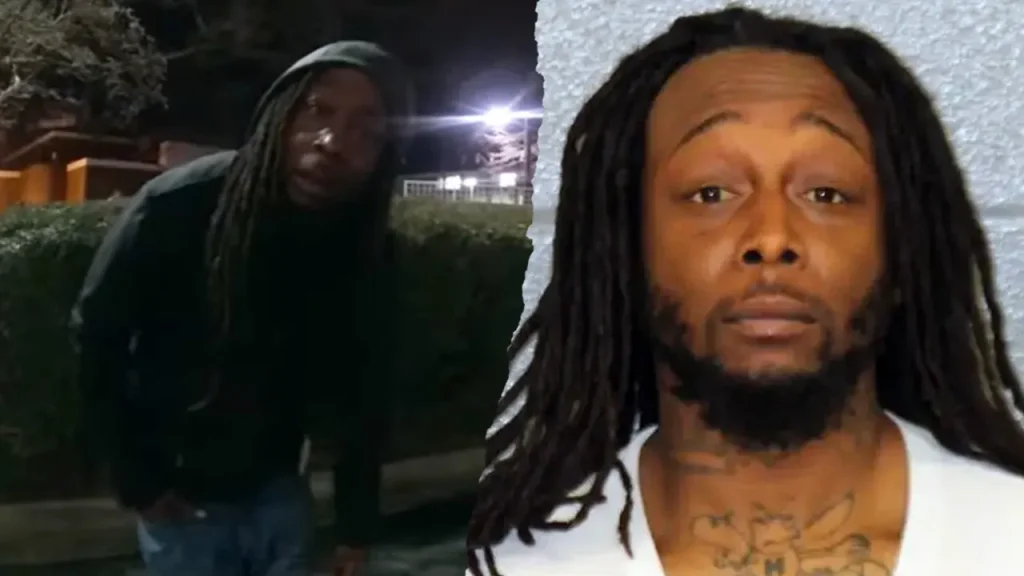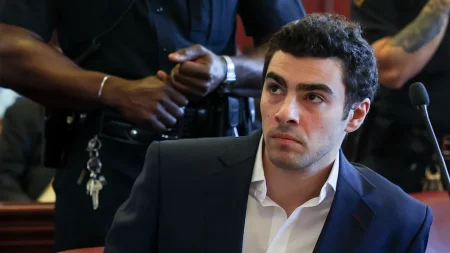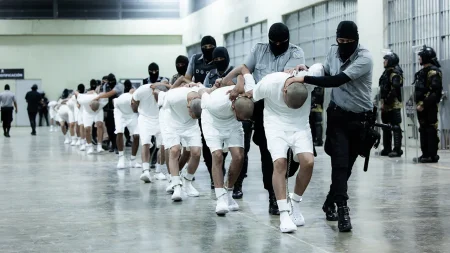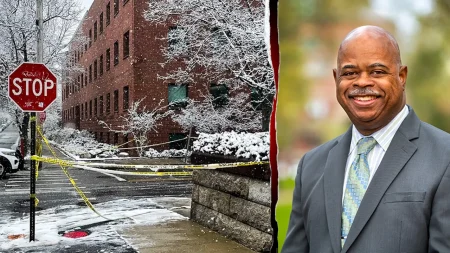A Troubled Mind: The Path to Tragedy on Charlotte’s Light Rail
In January, a routine police call in Charlotte revealed troubling signs of mental disturbance in Decarlos Brown Jr., months before he would allegedly commit a fatal stabbing on a city light rail train. Recently released bodycam footage shows Brown telling Charlotte-Mecklenburg police officers about his paranoid belief that a “man-made material” had been implanted in his body without his consent and was controlling his every movement and bodily function. The footage captures a clearly distressed Brown explaining that he “woke up on the ground” and was convinced “somebody did something to my body.” Despite the apparent delusions, Brown insisted to officers, “I’m mentally perfect,” rejecting previous attempts by medical professionals to diagnose him with schizophrenia, claiming “they got it wrong.” This interaction occurred roughly seven months before Brown would allegedly stab 23-year-old Iryna Zarutska to death in what authorities have described as an unprovoked attack on the LYNX Blue Line light rail.
The January police encounter highlights critical questions about how mental health crises are addressed within the criminal justice system. When responding to Brown’s self-initiated welfare check, officers advised him to seek medical evaluation at a hospital but did not initiate an involuntary commitment procedure. According to the Charlotte-Mecklenburg Police Department, this decision was made because Brown, despite his paranoid delusions, did not explicitly express intent to harm himself or others—the legal threshold for such intervention in many jurisdictions. During the nearly 30-minute encounter, Brown’s frustration led him to place a second 911 call while officers were still present, resulting in his arrest for misuse of the emergency system. This incident represents a missed opportunity in a system where clear warning signs of mental health crises may not trigger sufficient intervention without explicit threats of violence.
The tragic outcome of Brown’s untreated mental health issues came to light in August when Iryna Zarutska, a young woman with her whole life ahead of her, was stabbed to death on Charlotte’s public transportation. The randomness and brutality of the attack sent shockwaves through the community, raising urgent questions about public safety and the adequacy of mental health services. Brown’s family has suggested that proper intervention could have prevented this tragedy. In the aftermath, many community members have questioned how an individual exhibiting such clear signs of paranoid delusions could have been allowed to remain in public without meaningful treatment or supervision. The case highlights the devastating consequences that can result when severe mental illness goes unaddressed, claiming an innocent victim and forever altering countless lives connected to both the victim and the alleged perpetrator.
Beyond the immediate tragedy lies Brown’s troubled history, which points to a pattern of escalating issues. North Carolina Department of Adult Correction records show an extensive criminal record including convictions for larceny, breaking and entering, and armed robbery, culminating in a five-year prison sentence beginning in 2015. This criminal background, coupled with his apparent mental health struggles, represents a complex case that challenges our social systems. The intersection of criminal justice and mental health treatment has long been problematic in America, with prisons often serving as de facto mental health facilities without adequate therapeutic resources. Brown’s case raises questions about post-incarceration support and whether sufficient efforts were made to address potential mental health issues following his release from prison.
The release of the bodycam footage has intensified debate about where responsibility lies in preventing such tragedies. Some argue that law enforcement needs better training and more options for responding to mental health crises. Others point to underfunded mental health services and the difficulties in accessing appropriate care, especially for those with criminal histories. The legal threshold for involuntary commitment—requiring clear evidence of danger to self or others—may be too high in cases where individuals are experiencing severe delusions but haven’t yet threatened violence. Brown’s statement that “medic ain’t got no test or scan to investigate what my body got exposed to” reflects both his paranoia and a frustrating reality: detecting mental illness relies heavily on self-reporting and behavioral observation, not medical tests that would satisfy someone who lacks insight into their condition.
Ultimately, the case of Decarlos Brown Jr. and the heartbreaking death of Iryna Zarutska represent a profound societal failure—a young woman’s life cut tragically short, and a troubled man’s descent into violence that many believe could have been prevented. As Charlotte mourns Zarutska and grapples with this tragedy, the community faces difficult questions about balancing personal freedom with public safety, about how we identify and help those experiencing severe mental illness before crisis turns to violence, and about the resources we’re willing to commit to mental health care as a matter of public health and safety. The bodycam footage from January stands as a haunting document of a system encountering clear warning signs but lacking either the tools, the mandate, or the will to effectively intervene—a missed opportunity with the most devastating consequences imaginable.











